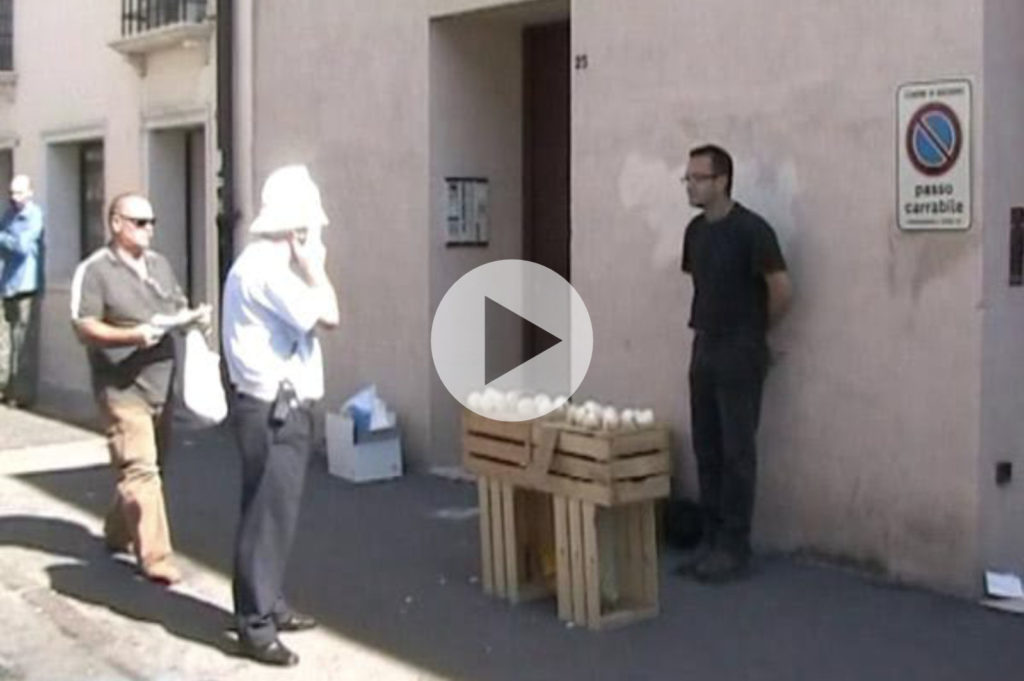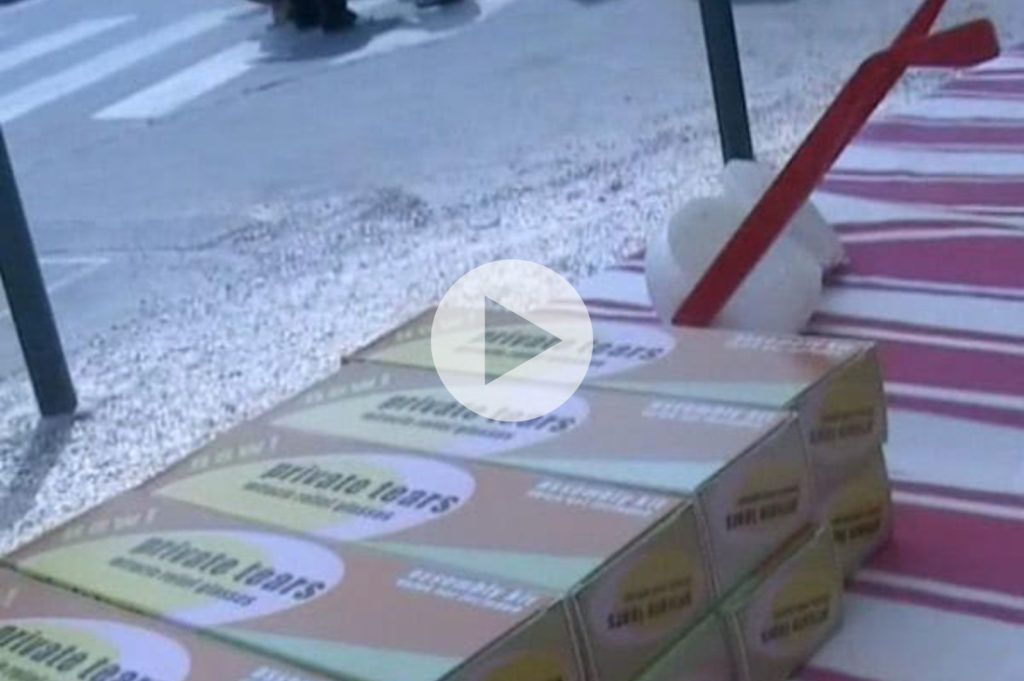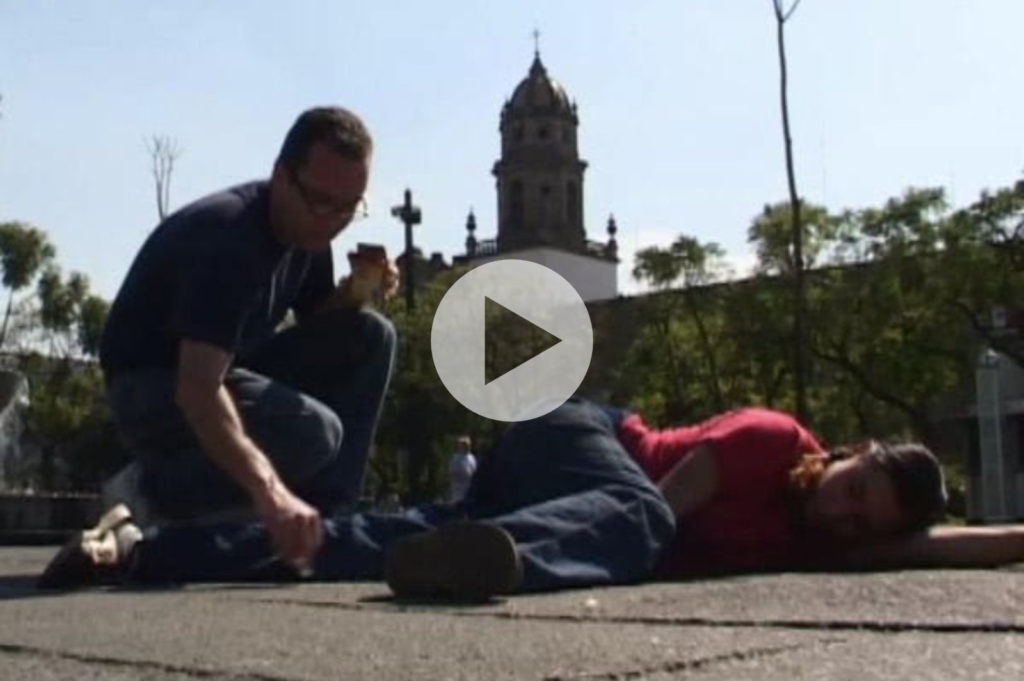_favela pavilion_
About the Favela Pavilion project
Constructing a space, a home in a designated place with discarted materials found on the streets of an underdeveloped metropolis is a process we term favela, casa de carton, squatter camp, paraga and baraka.
It can happen everywhere, it’s a kind of micro unofficial system living aside the official one. Different life styles.
A small pavillon, a favela is positioned anonymously on the site of the Biennale, close to the German and the Canadian pavillon. Made from the wasted materials of the Biennale it stands there seeming natural and does not resemble an artpiece.
It is an open space waiting to be discovered, a small house, an invitation. June 2003
It can happen everywhere, it’s a kind of micro unofficial system living aside the official one. Different life styles.
A small pavillon, a favela is positioned anonymously on the site of the Biennale, close to the German and the Canadian pavillon. Made from the wasted materials of the Biennale it stands there seeming natural and does not resemble an artpiece.
It is an open space waiting to be discovered, a small house, an invitation. June 2003
YOU ARE WELCOME
During the 50th Biennale of Venice, Dreams and Conflicts, the Dictatorship of the Viewer – and for the whole of the following year – a small illegal and peripheral pavilion existed within the gardens of the Biennale.
The favela pavilion, located between the Canadian and German pavilions, was opened to the public on June 12 2003. It was built on Sunday June 8 using the scrap materials generated from the setting up of the national pavilions in the gardens of the Biennale, without any permit or contact with the organizers of the exhibition, just as the favelas of the Third World.
The project which never aimed at drawing attention, remained peripheral from the get-go and transformed itself into a space where ideas, projects, collaborations, dreams, conflicts and, most of all, questions were generated. The operation never attempted to answer these questions which it nurtured, rather the intention was to testify, through its presence, their pertinence. The favela pavilion was, thus, an open process, shaped by the various sensibilities of its creators and visitors. It enriched itself –and grew – thanks to the discussions it generated, developing creatively and informally just as the favelas.
The fact that no type of permit was issued on the part of the Biennale of Venice reproduced the actual sensations of angst and vulnerability which is experienced as a persistent disturbance by the inhabitants of the “barrios” in the suburbs of the metropolises of underdeveloped nations creating the conditions risk and crisis in which ideas find an optimal humus for growth.
Many things occurred within the pavilion, many guests left their contact information in order to receive information on the development of the project; an exhibition took place, an article was published in a local newspaper, there was contact with Francesco Bonami, Curator of Biennale and finally a person wound up occupying it.
Spontaneously and randomly, artists, curators, critics and visitors grouped around the favela pavilion.
Finally the favela pavilion was dismantled by the organizers of the 9th International Architecture Exhibition on August 6 2004.
_selling tears_
selling tears
Intervention conceived within the context of Transmission 2004, an exhibition that turned the city of Bassano del Grappa into a theatre for artistic operations from the workshops of the Faculty of Visual Arts of the IUAV (University of Architecture, Venice). Set up as a stand amongst those of the market, Selling Tears functioned as a performance consisting in the sales of glasses with halved onions in place of the lenses - instruments which lead to a free flow of tears. Tears purify the soul, yet often and for various reasons, we hold them in, thus Selling Tears is an invitation to live our emotions with spontaneity.
private tears
This project is an evolution of the preceding intervention, carried out for the second edition of Transmission in 2005 (an itinerant intervention making stops in the markets of Verona, Treviso and Mestre, leading the participating artists to face different contexts). Private Tears is a kit packaged in a specially designed box, containing the pieces and instructions for the assembly of the onion glasses, thus giving the users the possibility to cry in private, choosing the appropriate moment and place.
_urban (play) traces_
Urban (Play) Traces is the name given to a series of public interventions carried out in different places, assuming specific meaning depending on the context. The action consists in selecting a space of symbolic relevance and drawing chalk outlines, just as the police do around homicide victims. The intervention, while presenting itself as a social critique, also assumes playful connotations through the relationship that is established between the drawer and the person acting as a model, finalized in a drawing with visual appeal.
urban guadalajara
Executed in 2005 in the Plaza Liberation of Guadalajara, Mexico, this was the first of a series of similar interventions.
The Plaza Liberation is a public square constructed as part of a questionable urban requalification project which involved the razing to the ground of many houses of the original historic city centre. The outlines, which extend over the length of the square, act as a memorial for the destroyed buildings. They function as a critique aimed at the intervention of an architect who chose to erase memory in order to build a square which would immortalize him.
The Plaza Liberation is a public square constructed as part of a questionable urban requalification project which involved the razing to the ground of many houses of the original historic city centre. The outlines, which extend over the length of the square, act as a memorial for the destroyed buildings. They function as a critique aimed at the intervention of an architect who chose to erase memory in order to build a square which would immortalize him.
urban beograd
In this case, the intervention consisted of tracing the chalk outlines in the square in front of the Belgrade Parliament Building , theatre of various political confrontations and protests, over the course of the complicated historic events of the city. It is therefore a place which endows the outlines with significant commemorative implications. Of interest was the extended participation of the other artists, present in the city at that time for the Real Presence 2005 workshop.
urban wellington
_como tacos_
_censura s.ta margherita_
_untitled u 13_

_negacion san juan_
_francos lizard_
Franco, an elderly sculptor and participant in the sculpture symposium held in Piedmont in 2004, is tied to Gaston through a relationship of respect and friendship. The participants of the symposium were each to produce a sculpture from the trunk of a tree within a preset amount of time and this video documents Gaston’s operation. Rather than producing his own piece, he offered himself to create the lizard that Franco had in mind, giving way to the presentation of two works: a sort of relational operation hinged on the will to participate in an exchange rather than achieve a personal goal.
Franco, an elderly sculptor and participant in the sculpture symposium held in Piedmont in 2004, is tied to Gaston through a relationship of respect and friendship. The participants of the symposium were each to produce a sculpture from the trunk of a tree within a preset amount of time and this video documents Gaston’s operation. Rather than producing his own piece, he offered himself to create the lizard that Franco had in mind, giving way to the presentation of two works: a sort of relational operation hinged on the will to participate in an exchange rather than achieve a personal goal.
Franco, an elderly sculptor and participant in the sculpture symposium held in Piedmont in 2004, is tied to Gaston through a relationship of respect and friendship. The participants of the symposium were each to produce a sculpture from the trunk of a tree within a preset amount of time and this video documents Gaston’s operation. Rather than producing his own piece, he offered himself to create the lizard that Franco had in mind, giving way to the presentation of two works: a sort of relational operation hinged on the will to participate in an exchange rather than achieve a personal goal.
_no se olvida el silencio_
The action no se olvida el silencio was performed the 3rd of October 2008 in the Paseo de la Reforma Avenue in Mexico City. Is a variation of Urban (play) Traces, a series of public interventions, I have been realizing since 2005. The initial input comes from the Tlatelolco Massacre, that took place during the afternoon and night of October 2, 1968, in the Plaza de las Tres Culturas, in Tlatelolco, a popular neighborhood of Mexico City, when the military and armed men shot student demonstrators. During the past 40 years the Mexican Government has tried to erase the memory of that terrible event. To keep that memory alive, Mexicans had strongly used the phrase: 2 de Octubre no se olvida! (2 of October won’t be forgotten!), that has become the symbol of all the social fights against impunity, corruption and illegal used of the law by the Government. Paseo de la Reforma is the most central and important avenue of the city. Most of the public demonstrations, during the 1968 social movement in Mexico, passed trough Paseo de la Reforma on their way to the Zocalo, the square where the Federal Government resides. The 13th of September 1968, the Great Silent March, a response from the students to the initial Government repression saw 250,000 people marching in silence along the avenue. The videos audio track is a live recording of the 40th anniversary of the Tlatelolco Massacre public march. Recorded on October 2, 2008, from Juarez Street, two blocks away from the Zocalo, shows the passing of the main contingent of demonstrators on their way to the protest meeting and has not been modified at all.









